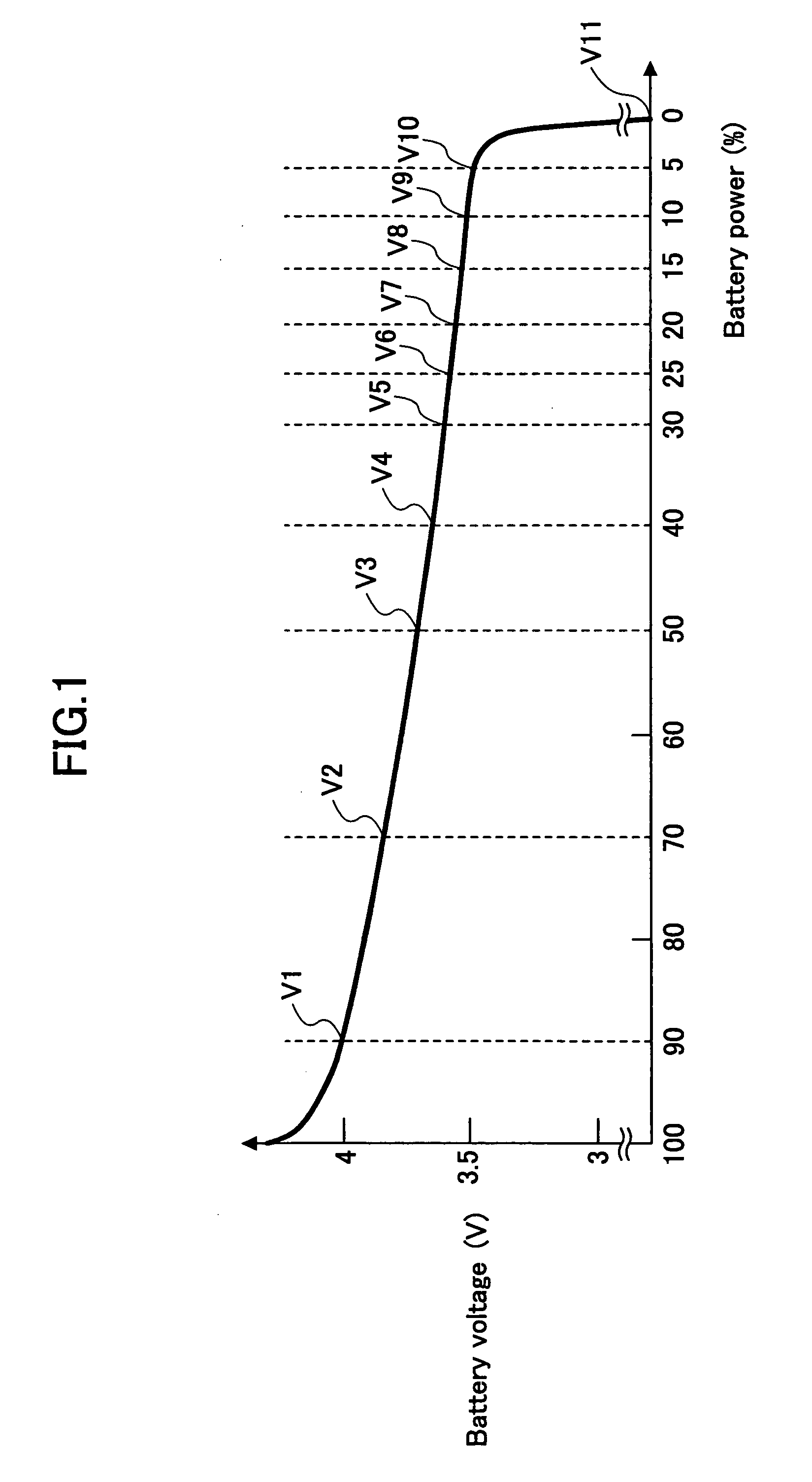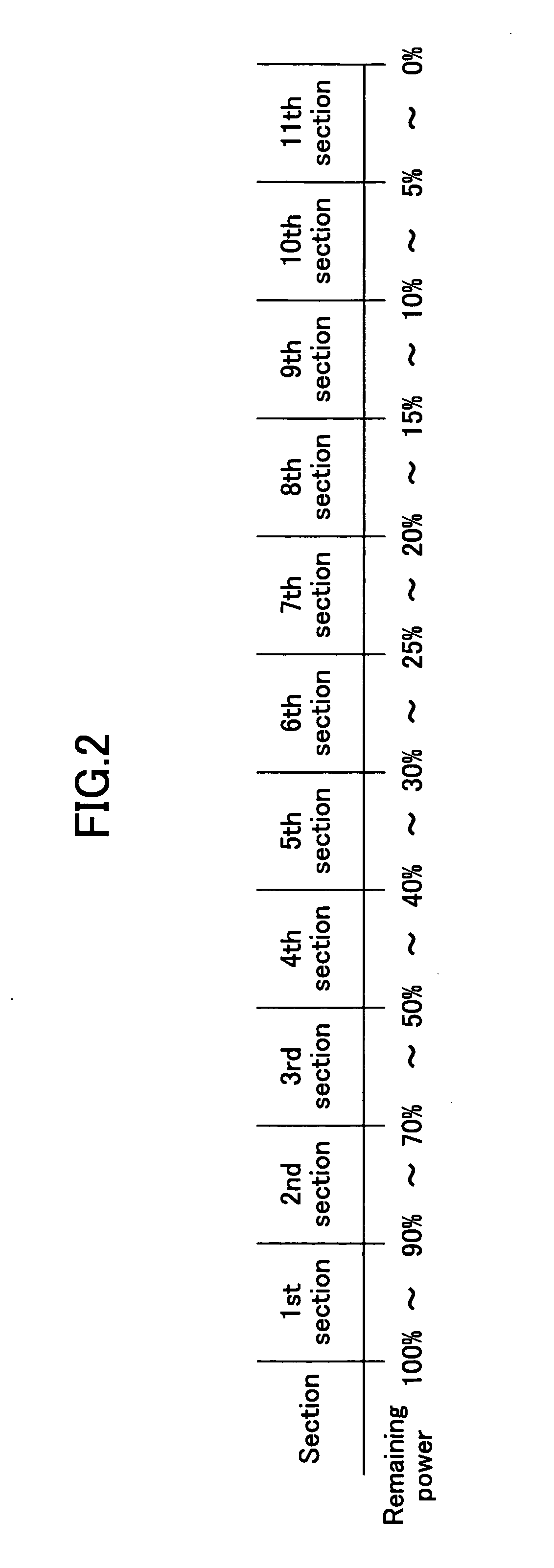Battery power detection device
a detection device and battery technology, applied in the direction of liquid/fluent solid measurement, instruments, transportation and packaging, etc., can solve the problems of battery power consumption, battery power detection device cost, and battery power consumption not negligible, so as to reduce the circuit area reduce the capacity of the memory, and reduce the detection accuracy of the battery power detection device
- Summary
- Abstract
- Description
- Claims
- Application Information
AI Technical Summary
Benefits of technology
Problems solved by technology
Method used
Image
Examples
first embodiment
[0057] The battery power detection device according to a first embodiment of the present invention utilizes the characteristic that an output voltage of a battery decreases along with the decrease of remaining power of the battery, so that from a detected voltage of the battery, a remaining power section is determined which includes the present remaining power value of the battery.
[0058] Specifically, the full power range of the battery is divided into plural sections, voltage values corresponding to the limits of each of these sections are output sequentially as reference voltages, the detected battery voltage is compared to the reference voltages, and based on magnitude relationship between the detected battery voltage and the reference voltages, a remaining power section including the present remaining power value of the battery is determined. Below, the limiting power values of each of the battery power sections are simply referred to as “limit powers”.
[0059] Since the relatio...
second embodiment
[0178] Below, a battery power detection device according to a second embodiment of the present invention is explained.
[0179] In the battery power detection device of the present embodiment, in addition to the temperature section including the present temperature of the battery and a current section including the present output current of the battery, the number of times of charging the battery is also considered when generating the reference voltages.
[0180] For example, assume the temperature of the battery is 25° C., the current of the battery is 0 A, and the number of times of charging the battery is zero; the battery voltage under these conditions corresponds to the n-th power section, the reference voltage corresponds to the n-th power section is Vn, and a correction voltage related to the number of times of charging is ΔVnk. This correction voltage ΔVnk can be calculated from a product of the number of times of charging and a degradation coefficient of the battery voltage in ...
PUM
 Login to View More
Login to View More Abstract
Description
Claims
Application Information
 Login to View More
Login to View More - R&D
- Intellectual Property
- Life Sciences
- Materials
- Tech Scout
- Unparalleled Data Quality
- Higher Quality Content
- 60% Fewer Hallucinations
Browse by: Latest US Patents, China's latest patents, Technical Efficacy Thesaurus, Application Domain, Technology Topic, Popular Technical Reports.
© 2025 PatSnap. All rights reserved.Legal|Privacy policy|Modern Slavery Act Transparency Statement|Sitemap|About US| Contact US: help@patsnap.com



